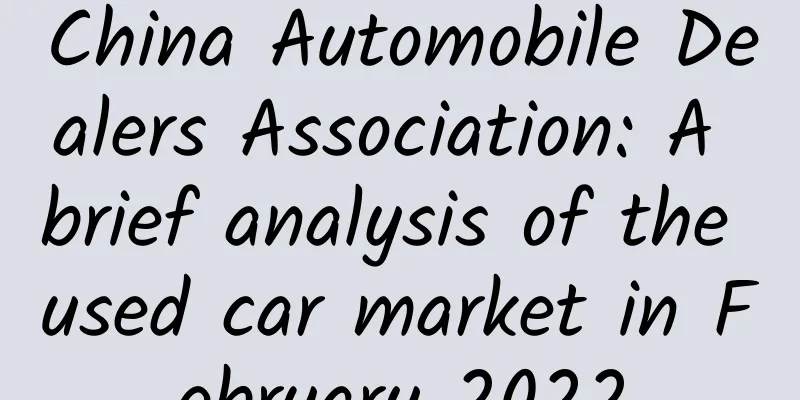What does it mean when Tik Tok creates content that violates regulations? Introduction to the types of illegal content created on Tik Tok

|
If Douyin users want to achieve the effect of attracting traffic and promoting, they must not engage in any illegal behavior. Douyin creators have common types of violations. As a novice user of Douyin, you may not know much about these aspects. In the following content, Dongguan editor Feng Chao will give you relevant introductions. Types of violations of Tik Tok content False and exaggerated advertising: Exaggerating or making false propaganda about the shared product information and various parameters and effects, including but not limited to: using absolute, deceptive or misleading language, text, pictures, measurement units, etc., making false or exaggerated descriptions of the shared product's effects, services and prices, and explicitly or implicitly stating content that is inconsistent with the actual product information, etc. Unfair competition: 1. Promoting products by disparaging other products, brands or other third parties, or making product comparisons based on false and biased information. 2. Goods or services given away through lottery/buy-get-one-free etc., with a value exceeding RMB 50,000. Deceived interaction: Using false promises as a gimmick to induce and deceive other users to interact with content/products. Unequal Trade: Imposing unreasonable conditions on normal transactions Illegal marketing: Promoting products as "self-produced" or similar information (except when the product category is a category that can be produced independently as permitted by national laws and regulations, and the product itself meets the platform's requirements and provides relevant commitments and certification materials to the platform.) Unqualified Marketing: Publishing content or products in the fields of medical care, insurance, auctions, and other professional fields that require specific qualifications to engage in specific activities as required by Chinese laws and regulations without platform certification Illegal recruitment/resale: Posting content or products containing recruitment information, or promoting the resale of cross-border products Infringement: There is infringement of other people's intellectual property rights; Unauthorized use of other people's pictures, videos, trademarks, works, etc. that poses a risk of infringing on other people's trademark rights, copyrights, patent rights, etc.; Sharing counterfeit or pirated goods; Fictional authorization behavior that claims or implies authorization by celebrities, entrepreneurs, or other public figures, brands, or platforms in any form; Share or publish products or product information that may cause confusion or misperception among consumers; Intentional or other acts that infringe upon the legitimate rights and interests of a third party. Attention-grabbing hype: Use hot social events, pseudoscience, and other methods to attract attention or promote inappropriate values to engage in marketing activities. This concludes this article about what is meant by Douyin content creation violations and the types of Douyin content creation violations. For more relevant Douyin content creation violation types, please search Dongguan Feng Chao’s previous articles or continue to browse the related articles below. I hope everyone will support Dongguan Feng Chao in the future! |
<<: What are the techniques for search bidding mobile promotion? Here are 8 suggestions for you
>>: 3 Steps to User Growth Strategy
Recommend
Challenges facing humanity: Increasingly invasive species
Produced by: Science Popularization China Produce...
HTTPS vulnerability exposes 1,500 iOS apps to security vulnerabilities
SourceDNA, an app analytics service company, rele...
[Operation Case] In-depth interpretation of community operation, this is my ten thousand word summary after experiencing four communities
A mature community is like a city. It manages its...
China Internet Report Released: Average Online Time Per Week: 27.9 Hours, Average Mobile Data Traffic Per Month: 7.2G
Now everyone is saying that "the traffic div...
How resilient are sharks? They have survived several mass extinction events
Fossils are like masterpieces of nature, not only...
Will Antarctica be habitable in the future?
Antarctica's ecology is already changing as g...
The latest ranking of 56 information flow advertising media platforms
The following is the latest traffic rankings of 5...
Can iPhones be used for medical research? Here's what Stanford professors say
Since 2007, more than 1 billion iPhones have been...
Apple's contract manufacturers are exposed for multiple violations: long working hours and low wages
The Fair Labor Association (FLA), a non-profit wa...
Forum community traffic diversion skills: How to get nearly 100,000 seed users in 8 hours at zero cost
Among the many promotional techniques, what I wil...
Android 5.0's most beneficial and most useless new feature
There are so many new changes in Android 5.0 Loll...
Lin Yu's "Douyin Account Diary 1.0" Atypical Short Video Strategy Course
Lin Yu's "Douyin Account Diary 1.0"...
Kuaishou Account Practical Operation Guide
1. How to formulate an operation plan for a new a...
How to create hot marketing activities and specific implementation plans!
In the early morning of July 27, I saw several on...









